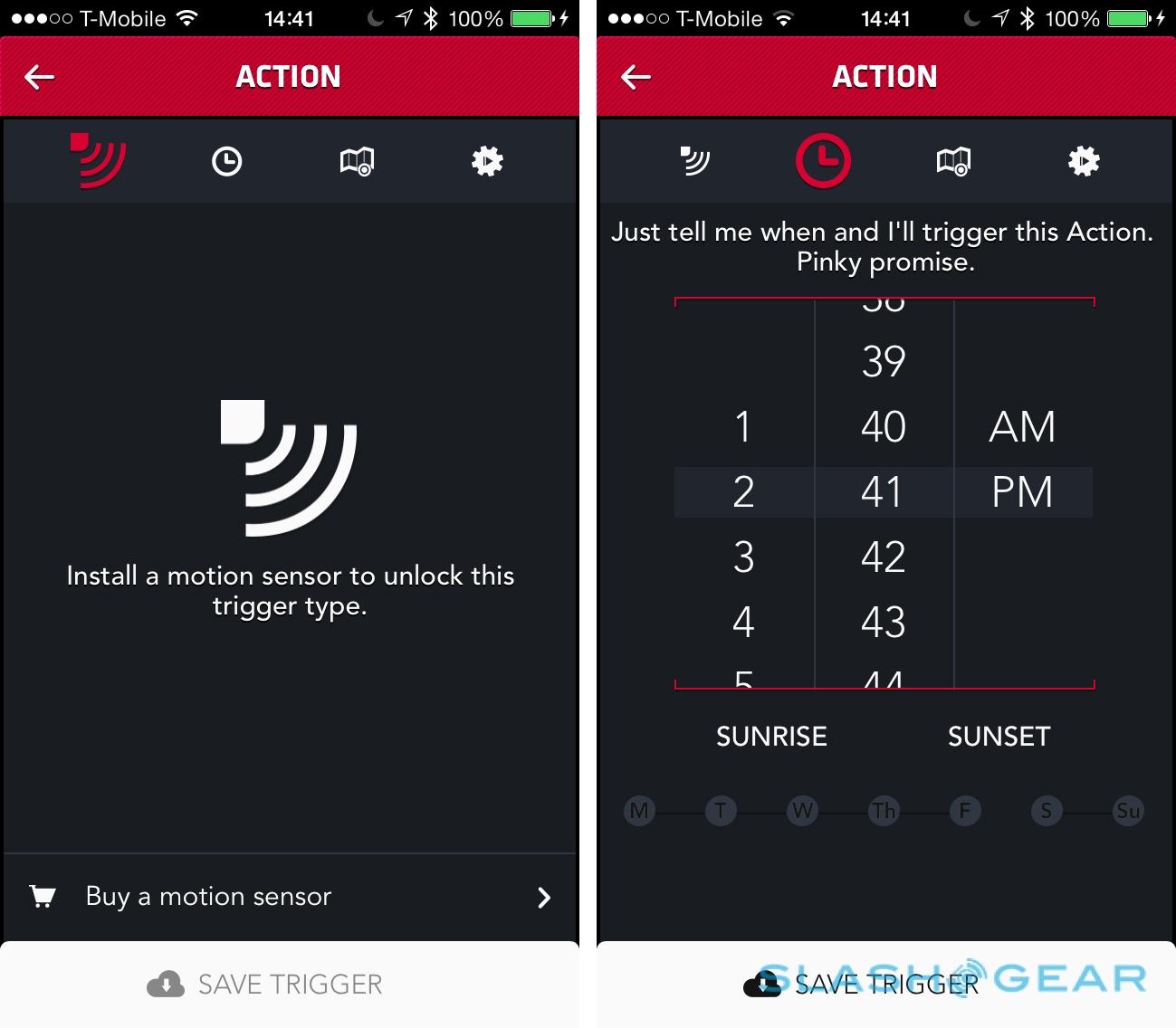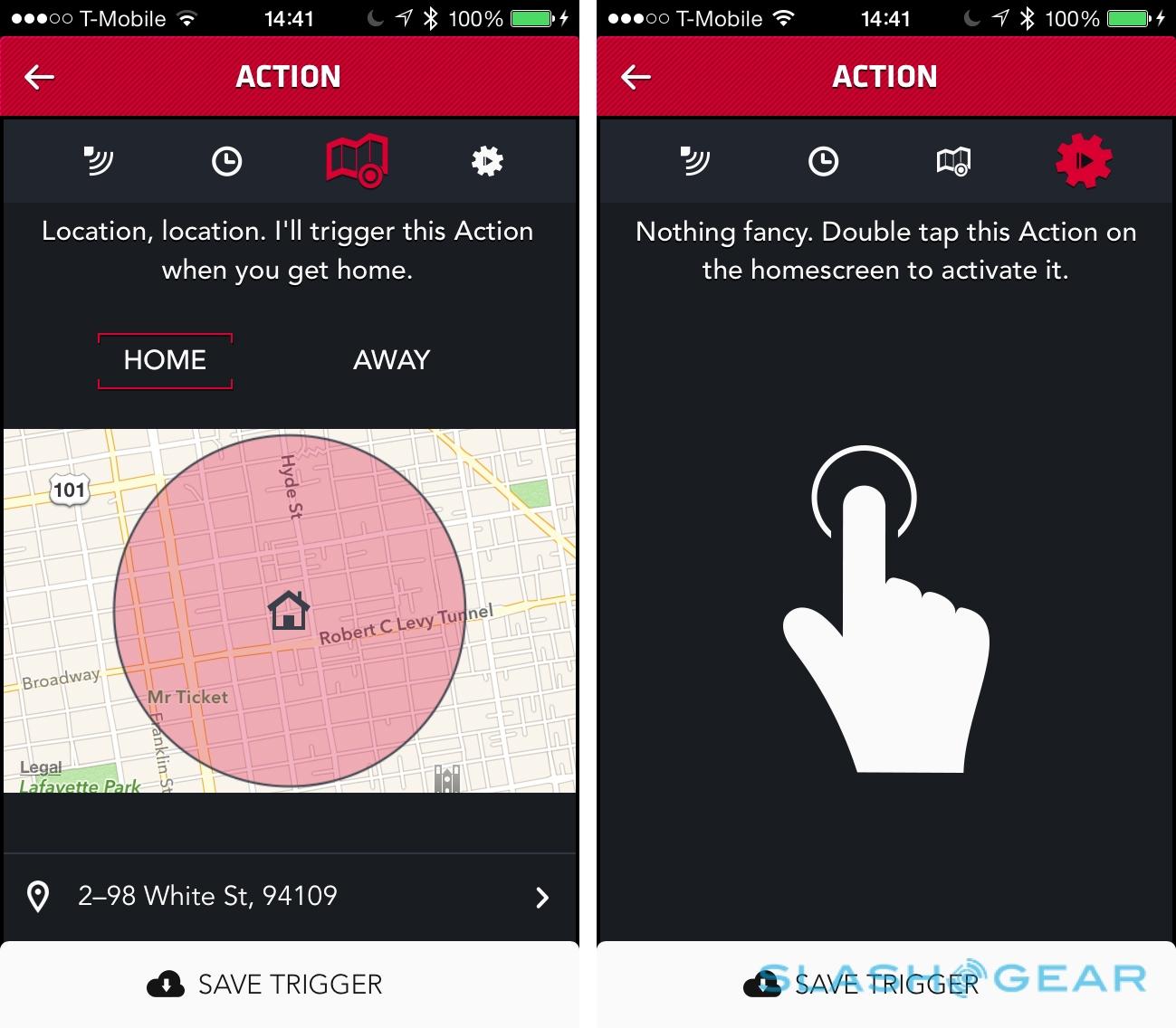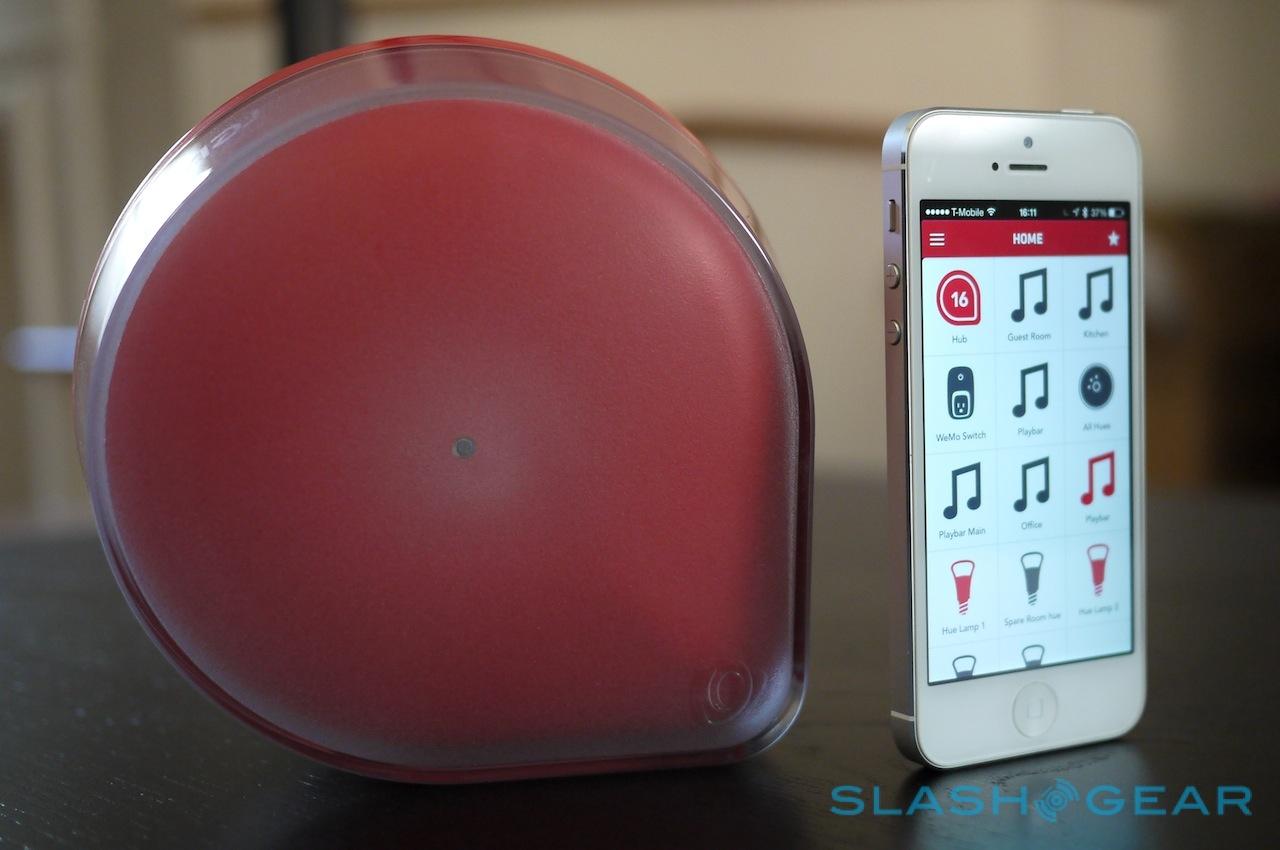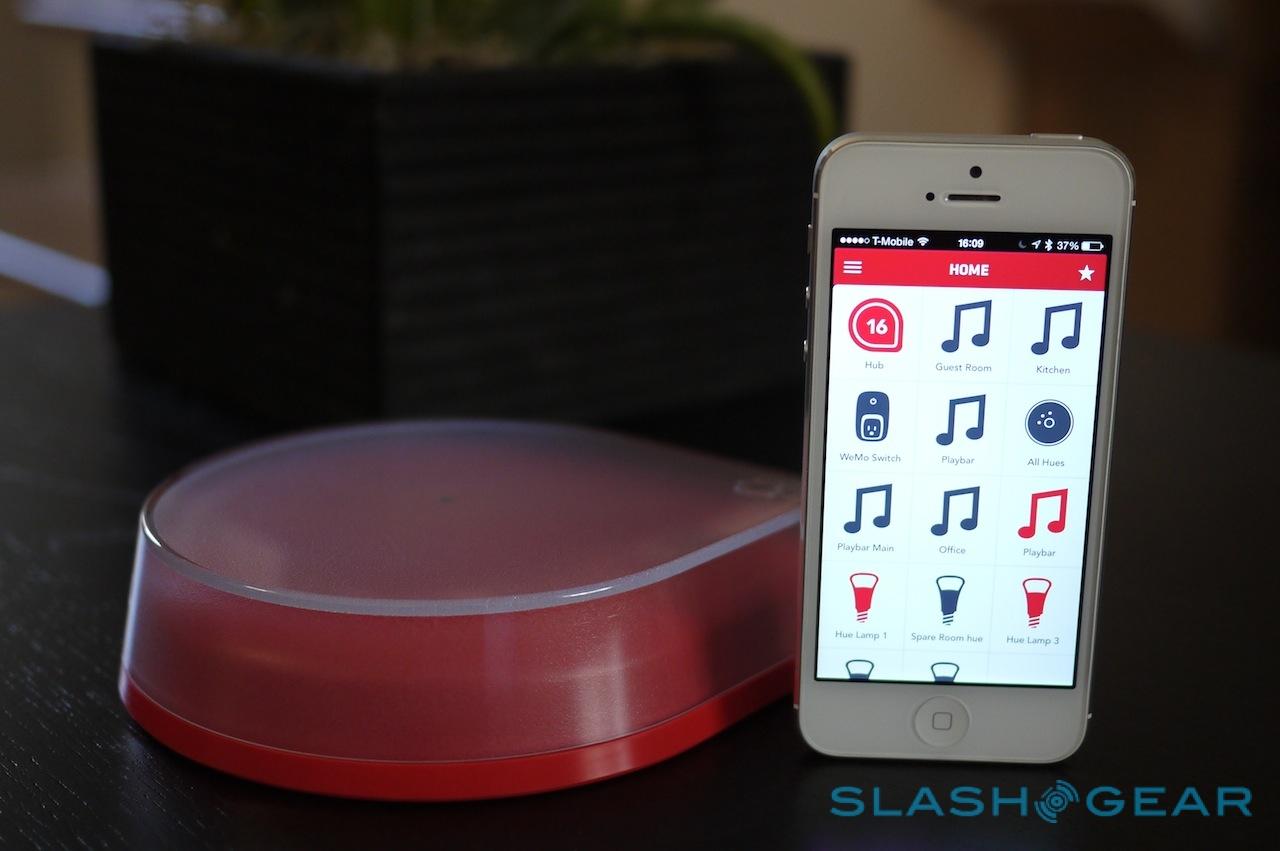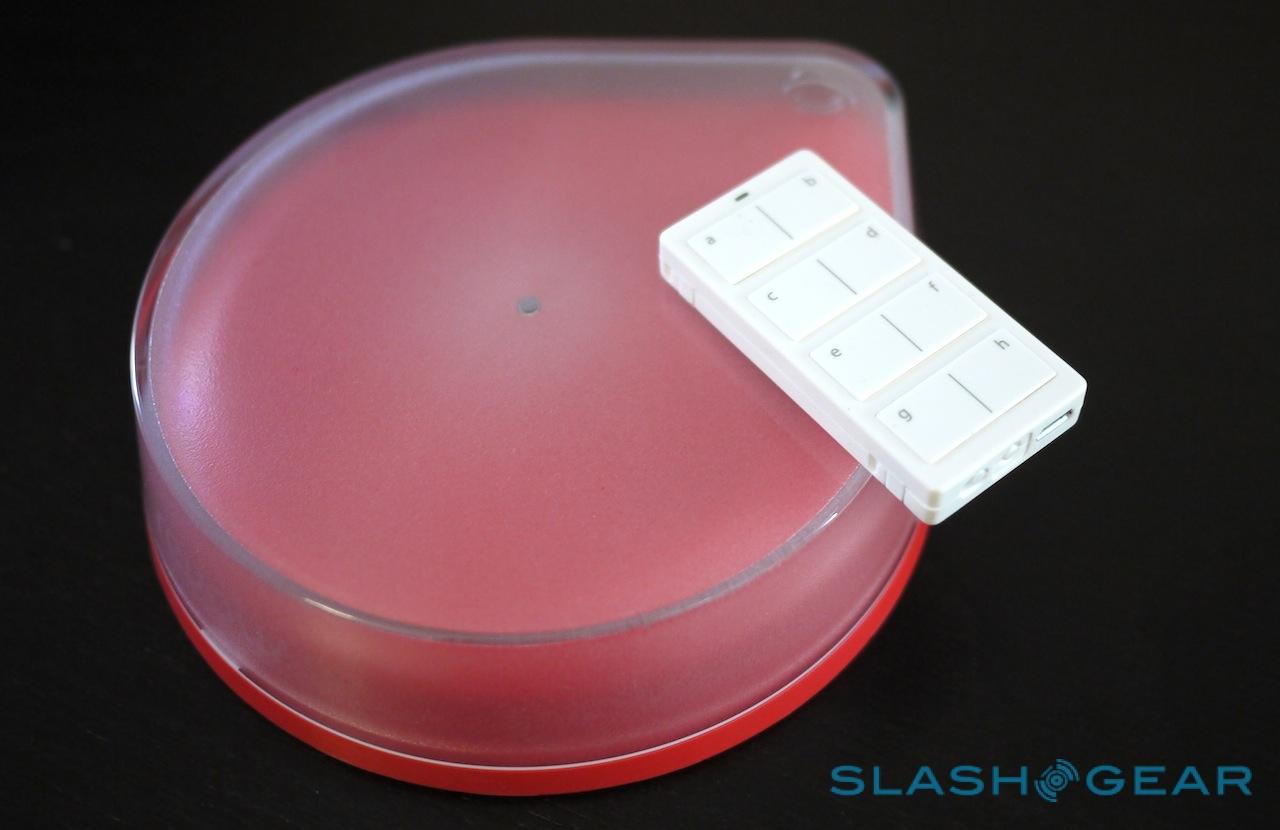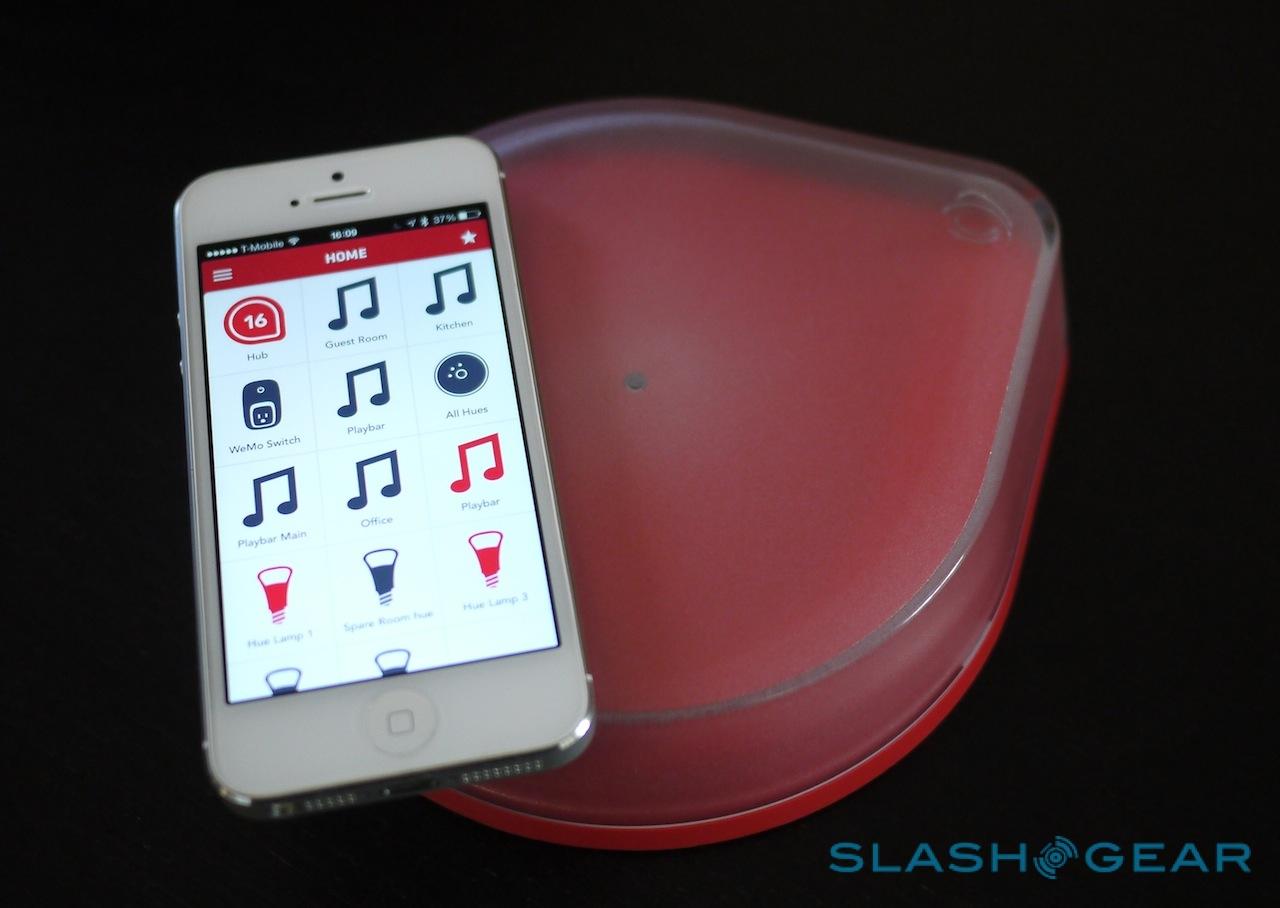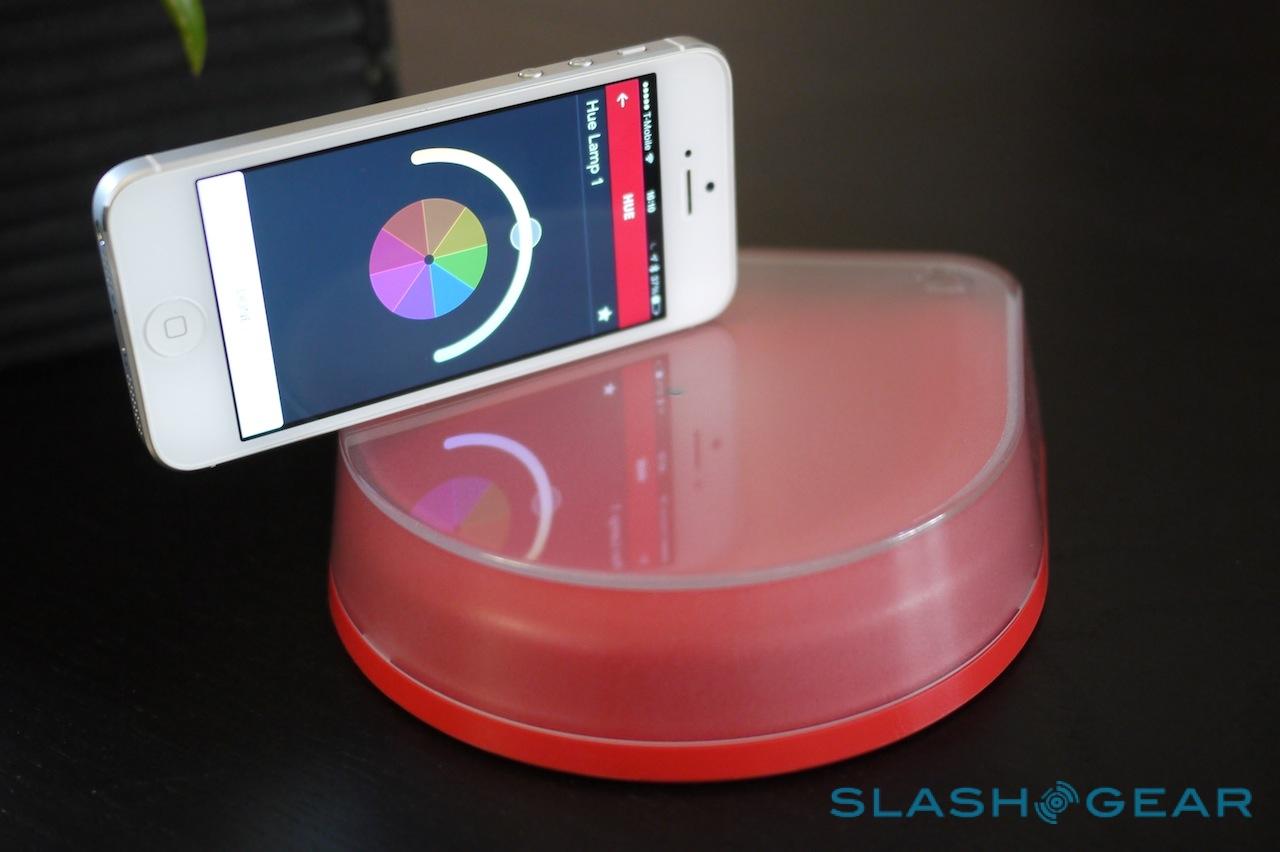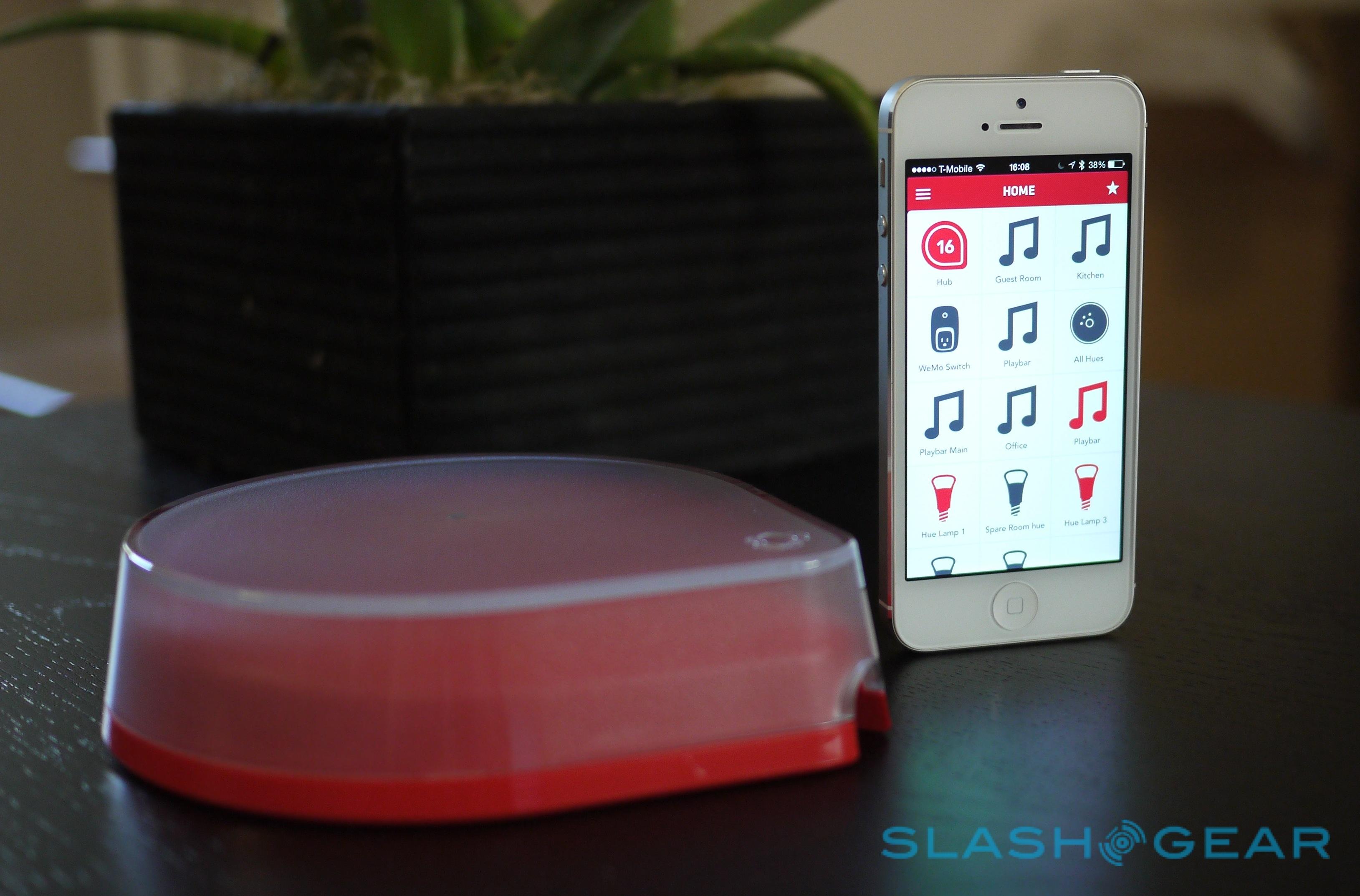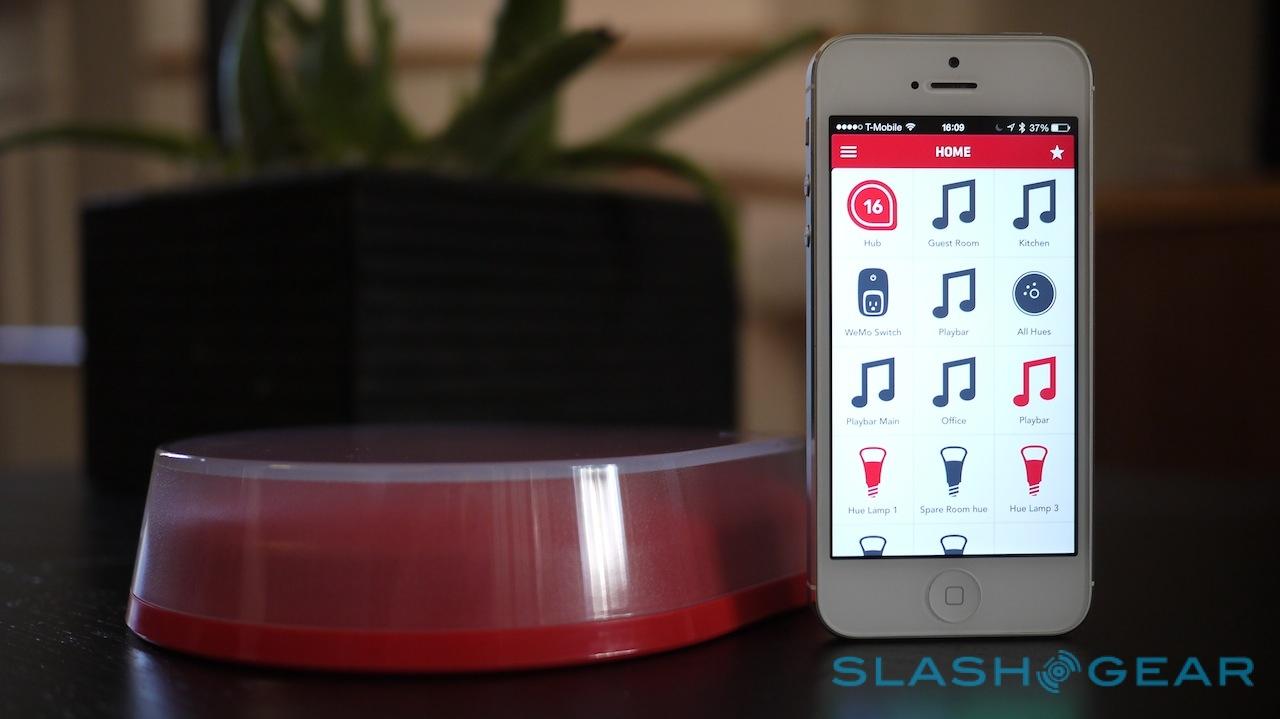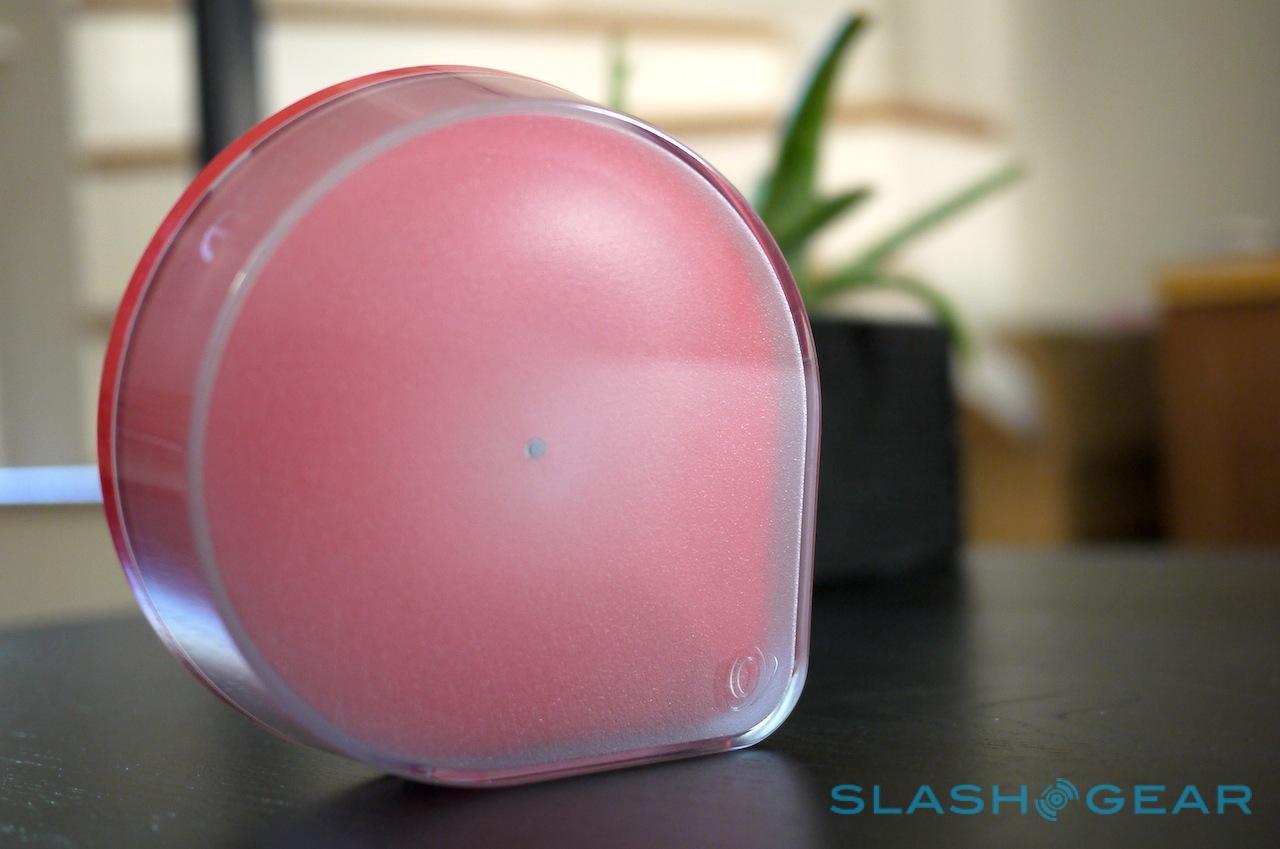Revolv Hub Review
If the kitchen is the heart of the home, then "node zero" is the heart of the smart home, but in today's plug-and-play world of lifestyle automation that doesn't have to mean a cabinet full of rack-mounted hardware and professional installation. Startup Revolv aims to be the hub of the new generation, a central point at which automation favorites like Sonos, Philips' hue, and more can gather for more intelligent control. With no single leader in the smart home space, however, and numerous competing wireless standards in play, that's a lot to ask from the teardrop-shaped gadget: so, is it home sweet home or fit only for the mad-house? Read on for the SlashGear review.
Concept
Traditionally, home automation has been the preserve of expensive new build homes or even more expensive retro-fit installations, with companies like Insteon, Crestron, and others creating tightly-integrated ecosystems of lighting, multimedia, security, and more. Although they generally work well, they're also invariably several thousand dollars for both hardware and professional fitting, and leave little room for user-modification.
In the past few years, however, there's been a rise in consumer automation: products like Philips' hue lighting system, Sonos' streaming music players, wireless bulbs and outlets from Insteon and GE, and smart thermostats from Honeywell and Trane. Even the front door has got in on the action, with wireless locks that can be remotely controlled from a smartphone.
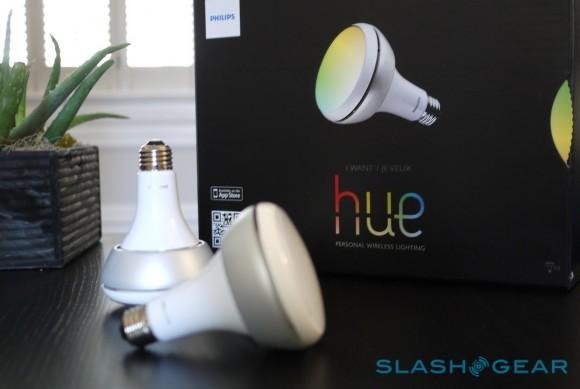
Each promises plug-and-play installation, often as easy as slotting a small box in-between a lamp or coffee maker and the outlet it was previously plugged into, with prices generally in the low-hundreds rather than the thousands. However, as the DIY smart home gets more advanced, so controlling all of the different elements gets more confusing, each platform with its own app, its own functionality, and little to no way of linking them together. Enter the Revolv Hub.
Hardware
Outwardly there's not much to say about the Revolv. About the size of a wireless router, it has a single socket – for the power supply – and is finished in a combination of red and frosted plastic. Connectivity is primarily via your existing WiFi router; Revolv tells us an ethernet port was skipped since it means the Hub can be placed centrally in the home, where it'll stand the best chance of hooking up to every automation gadget installed.
Setup is straightforward. Plug in the hub and wait for the light on the top to start flashing. Then, install the smartphone app – currently iPhone-only, with a dedicated iPad version and an Android version in the pipeline, but the app for Google's platform not expected until sometime in Q1 2014 – and punch in your WiFi credentials.
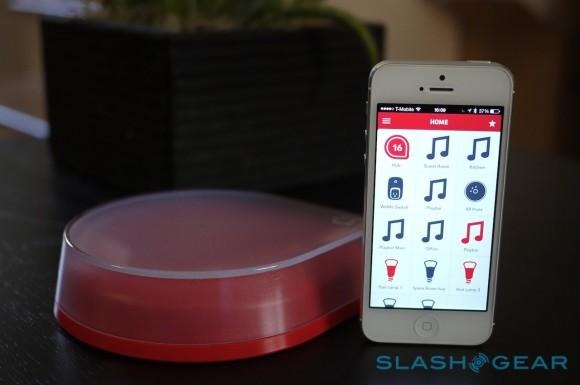
Revolv has cooked up a system called FlashLink to transfer these between phone and Hub: hold the phone above it, and the LED flash on the iPhone flickers out the details like a high-tech Aldis lamp, picked up by a photoreceptor in the Hub. If you're using the app in double-size mode on the iPad, which lacks a flash, it flickers the display instead.
If the outside is simple, the inside of the Hub is fiendishly complex. Revolv has packed it with seven different wireless radios for a total of ten configurations, to cater for the different standards in play by smart home vendors, though at launch only three will be active. WiFi, Z-Wave, and Insteon will be followed by ZigBee support later on, with Revolv keeping quiet on exactly which other standards will be enabled.
Still, even with just three turned on, there's a decent list of compatibility. For lighting, there's Philips hue and Insteon's LED bulb; in thermostats, there are models from Honeywell and Trane. Sonos' speakers are supported, while wireless locks from Kwikset and Yale are also on the list, plus Smarthome's Insteon wireless motion sensor.
In outlets, models from Insteon, GE, Leviton, and Belkin are supported, while Insteon and GE wall switches and dimmers are also included. Insteon's remotes can be used too, meaning you can add physical buttons to the system relatively simply: we were able to assign devices and Actions to each key of an 8-button keypad, meaning we didn't have to turn on our phone just to shut off the lights before we went to bed. Revolv has a comprehensive list of models in its FAQ.
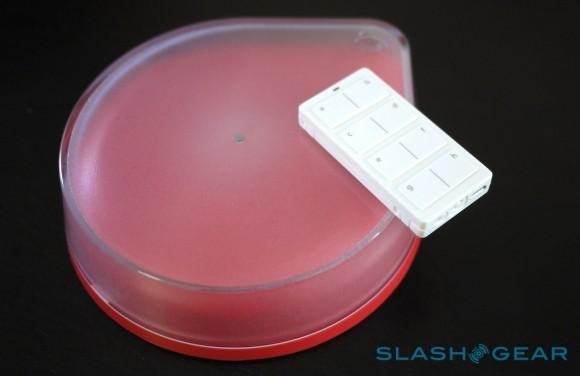
Just because a vendor is on the list, however, doesn't mean that all its home automation hardware will be supported. In our test setup, a Belkin WeMo outlet was recognized, as Revolv promised, but the companion WeMo motion sensor was not: although it shows up in the list of identified devices, tapping it only gives the option to report it to the Revolv team so that they can potentially support it later on.
Also absent from the list – but often found in the average smart home – are any sort of wireless cameras, though Revolv says they're next on the list post-launch. In fact, co-founder Mike Soucie tells us, the company intends a biweekly addition of new product support, along with updates to the app roughly every 1-1.5 months.
The goal, Soucie says, is to support 95-percent of the connected home devices out there, though obviously the extent to which they can be managed depends on how open the individual vendors are. Feeling threatened by Revolv is supposedly a common first reaction – "are you here to replace us?" is a frequent question, Soucie admitted – but the company's goal is to live alongside the native apps.
Software and Usability
That focus on collaboration rather than conquering leaves the Revolv app walking a sometimes tricky line between functionality and usability. The goal was to create a starting point that functions in aggregate with the full features of each individual app: Revolv would be the software you open multiple times a day, with the native apps less commonly required, or so the theory goes. In practice, that works some – but not all – of the time.
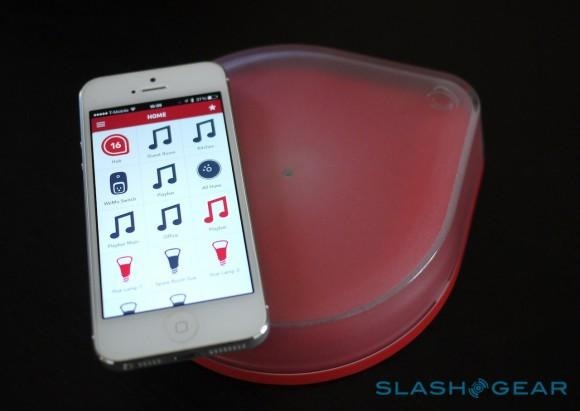
The main screen shows a thumbnail grid of your Hub and each of the individual devices connected to it. Every device gets its own icon – so if you have hue bulbs in every room, each bulb gets a separate button – that lights up red when it's active or grey when it's not. Tapping once takes you into the device's settings; double-tapping turns it on or off.
On the left, there's a menu for support, links to buy new devices, settings for the Hub itself, and controls to reset it and turn off the periodic tips that show up. On the right, there's a list of all the devices ordered by type – music players, outlets, etc. – along with any "Actions" you have set up, effectively Revolv's name for macros.
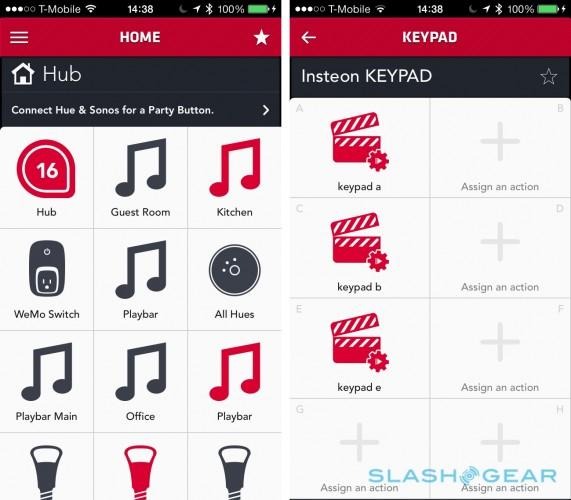
The grid layout can get busy if you've got a complex setup at home. There's no support for folders – you can dump all your individual hue bulbs into a single folder, for instance – but you can selectively hide devices from the grid by toggling the star icon in its settings. That meant we could temporarily remove the WeMo motion sensor which isn't currently supported, for instance, as well as a set of Sonos speakers which had been set up as a rear surround-sound pair to a Playbar. Each device can be renamed, too, for example as the room it's in.
Tapping the Hub icon itself shows everything connected and its power status, as well as the option to add new devices or set up Actions. For the former, there are a couple of ways to do it: Sonos, hue, and Belkin hardware is recognized automatically, and in fact all of our speakers, bulbs, and sockets were automatically populated into the list as soon as we installed Revolv. Other devices require a little setup work, usually either power-cycling them or pressing a "Set" button, in order for the app to spot them. A database of specific instructions for each device supported is available too.
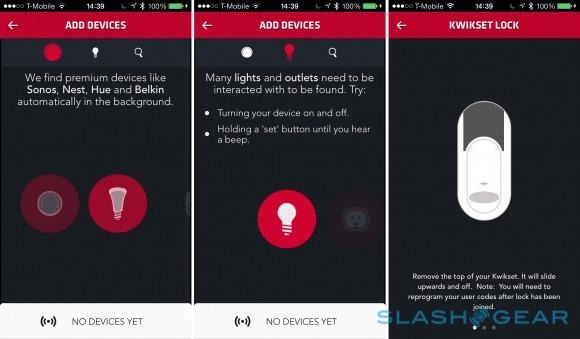
As for Actions, they're part of what makes Revolv compelling. Effectively you choose a trigger and a result: the former could be as straightforward as a button on the homescreen grid, or a time (either specific or sunrise/sunset), but can also be a motion sensor or even based on your physical location. The latter can include any combination of connected devices, such as turning on different hue lights, playing Sonos speakers, powering up outlets, or unlocking your doors.
It's still early days for Actions, though, and it's the part of the Revolv experience that needs the most work. In the location-based triggers, for instance, the Revolv itself decides where it is, as well as the extent of the triggering area, and there's currently no way to change them. Since Revolv decided our review unit was a couple of blocks away from our actual location, and that the triggering area should cover a radius of around four blocks in all directions, it significantly reduced the usefulness of having Actions triggered by where we were.
For instance, an Action to shut off all the lights and pause Sonos playback when we left, then another to resume them when we returned, never actually got triggered when we ventured out to our local coffee shop, since we were still considered "inside" the area. That's not such an issue for lighting, but if your front door is being automatically opened it could mean your home was unlocked despite you still being some distance away.
There's also no support for conditional Actions, where more than one factor contributes to the trigger. A good example of how that limits usefulness is lighting: you can have lights that come on at a certain time, or that come on when movement is detected, but you can't combine both factors and have, say, motion-triggered lights only when it's actually likely to be dark. Similarly, if your Sonos speakers are set to resume playback when you get home, using the location trigger, you can't tell Revolv to only run that Action if it's before, say, 10pm to avoid waking people up if you're getting back late.
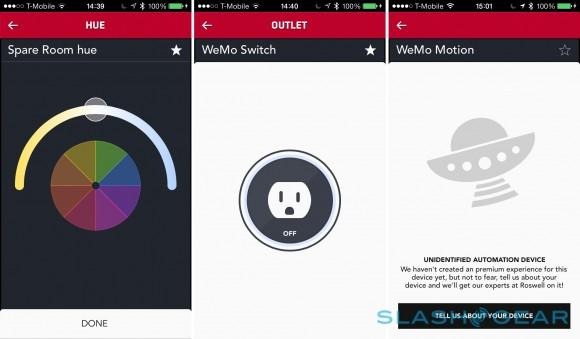
Conditional Actions are, Soucie tells us, something Revolv is working on, and in fact the team hoped to have them supported by the Hub before it launched. Unfortunately they weren't completed in time for that to happen, and will have to follow on in a subsequent update. Similarly, adjusting the default location and the size of the trigger area are also elements that Revolv plans to allow users to change.
Ambitions that exceed development resources is a common issue for startups, but Revolv's other problem is in how open third-party manufacturers are to working with the Hub. That changes how flexible control over each device is through the Revolv app itself.
For remote-control outlets, it's pretty straightforward: on/off control, and perhaps a dimmer adjustment triggered by tapping and holding, then pulling your fingertip up or down, depending on what's plugged in. Philips' hue bulbs have power, brightness, and color settings, for instance, though you don't get the full range of control over exact color as you do in the native hue app.
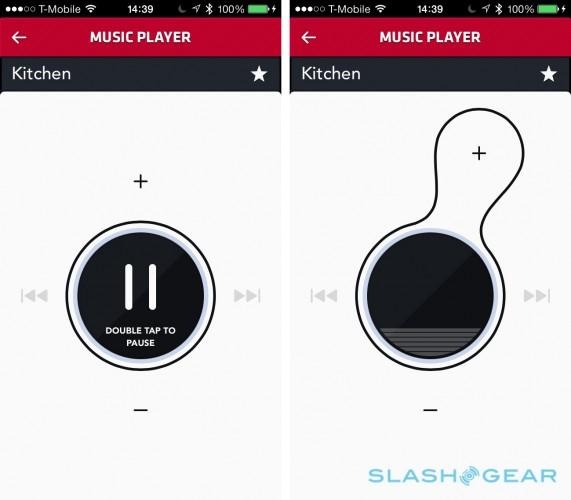
Sonos functionality, though, is relatively limited. You can play/pause the current playlist assigned to each speaker, as well as adjust volume and skip forward/back, but you can't actually change the playlist itself or add/remove tracks. For that, you need to go into Sonos' own app. There's no way to set a single shortcut to, say, load up your romantic playlist and dim the lights, since the Sonos speakers will only resume what they were last playing.
The issue, Soucie explained, is that Sonos' API doesn't actually expose playlist control, so if Revolv wants to add support it has to do it in an unofficial way. That's actually working on the company's test bench, but isn't at a stable enough stage to release to end-users. Things may improve in 2014, when Revolv plans to open its own API up to third-parties, and the company is already in discussion with potential partners about API reciprocity which could improve things.
We'd love, for instance, to see IFTTT support baked in, since that would be a good way to bridge the broader Internet of Things with Revolv's ecosystem, without necessarily requiring the Revolv team to manually add them in. The company is also weighing the ways in which it could do a desktop app – whether that would be a locally installed widget, a browser-based interface, or something else – though has no timescale for its release, and Soucie also told us that there's chatter of behavior analysis and predictive Actions, though that is probably still 3-5 years down the line.
Wrap-Up
Home automation may have been around for decades, but the modern interpretation of the smart home is still in its infancy. That means we're yet to see any one manufacturer – or indeed any one standard – emerge as the dominant player. Individual products generally work well, but trying to piece together a whole lifestyle automation system that not just the geeks in the home can (or want to) use is less straightforward.
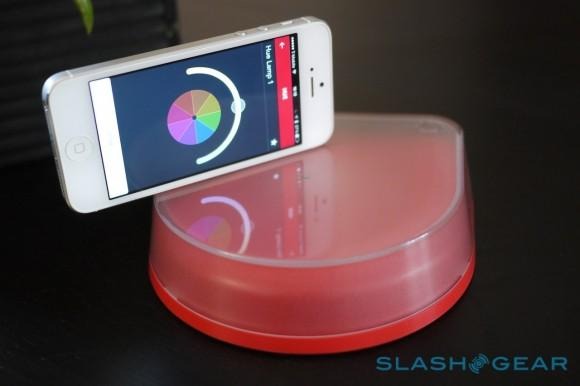
At $299, Revolv's approach – to aggregate rather than replace – is a tempting one, then. The company has done much of the hard work itself, with the Hub's radio selection and its ease of setup, and assuming the promise to continue broadening the range of supported products pans out, addresses the cross-device compatibility problem while the industry as a whole tries to figure itself out.
As it stands, the weak point is in the flexibility of the software. Revolv has the promise to join together each disparate strand in a more intelligent way, but the flexibility of the Actions offered is currently too broad-strokes. The location-based triggers might work if you're living the suburbs, but in more densely-packed urban locations the lack of accuracy and adjustability meant we gave up on it as an option. The absence of conditional or multi-stage Actions also undermines their true value, and our multi-platform home found the iOS-only app limiting.
Still, all of that will be addressed in software, and from several discussions with the Revolv team, it's clear the company is nothing if not ambitious. Right now the market for people wanting to inter-connect multiple DIY home automation devices is relatively small – a subset of a subset, perhaps – though that's only expected to increase as more wireless bulbs, intelligent thermostats, and streaming media players come online. If Revolv can address its software shortcomings and maintain the pace with the new devices that launch, the diminutive "node zero" Hub deserves to be the heart of your smart home.

